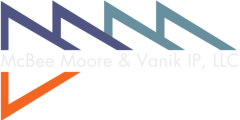
- Trademark & Copyright
- Biotechnology
- Chemistry & Materials Science
- Medical Technology
- Pharmaceuticals

Filing an Assignment and Oath/Declaration for a Deceased Inventor
In law, the details are everything. One slight variation in the facts changes the outcome. One example is satisfying the assignment and declaration requirements for a deceased inventor in Post-AIA patent applications.
Ownership of a patent gives the patent owner the right to exclude others from making, using, offering for sale, selling, or importing into the United States the invention claimed in the patent. 35 U.S.C. § 154(a)(1). Under normal circumstances, the inventors are considered the owners of a patent but can assign their ownership rights by an instrument in writing, and the assignment of the patent, or patent application, transfers to the assignee(s) an alienable ownership interest in the patent or application. 35 U.S.C. § 261 .
Assignment from Deceased Inventor
When there are joint inventors and one or more is deceased, assigning ownership becomes a more complex process. The chain of ownership should be established from the deceased to his heirs and then from the heirs to the assignee. This can be accomplished, for example, by using court documents confirming the heirs of the deceased inventor and having those heirs assign their rights to the assignee. In addition, the remaining living inventors should also transfer their ownership rights to the assignee.
Oath/Declaration Requirement for Deceased Inventor
Under 35 U.S.C. § 117, legal representatives of deceased inventors may make application for a patent upon compliance with the requirements and on the same terms and conditions applicable to the inventor. In addition, a person to whom a deceased inventor was under an obligation to assign the invention – such as an employer – may also make application for a patent. 35 U.S.C. § 118. To satisfy the oath or declaration requirement, a Substitute Statement (USPTO form AIA/02) must be executed by someone authorized to do so. 37 C.F.R. 1.64(a).
Once you have all of the above elements, fulfilling the assignment requirements is as easy as uploading to the USPTO and recording the three separate assignments – living inventors, documents establishing heirship, and the heir’s assignment. Similarly, fulfilling the oath or declaration requirements is as easy as submitting oaths/declarations from living inventors and a Substitute Statement executed on behalf of a deceased inventor.
More Insights

- (718) 701-0700
New York City Greater New York New Jersey Nationwide Patent Attorneys
Book your FREE strategy call
Home / What Happens to Patents When You Die?
What Happens to Patents When You Die?
Rich Goldstein

Have you ever wondered what happens to patents when you die? What will happen to your intellectual property once you’re no longer alive? It’s an important question to consider, as your creative work and ideas hold great value, and should be protected even after you pass away.
Intellectual property rights have become an increasingly valuable and complex part of one’s estate. This article delves into the intriguing world of patents and explores what happens to these unique assets when their creators pass away. Understanding the fate of patents after death is crucial for inventors, their heirs, and the protection of their groundbreaking ideas.
When you die, your patents do not automatically vanish; they become part of your estate. The fate of your patents depends on factors such as your will, applicable laws, and your intentions. Patents can be inherited, assigned, licensed, or sold, ensuring your intellectual property’s continued protection and commercialization.

If you want your family to still benefit from your patents, they must be transferred to the right beneficiaries when you pass away. There are ways to write the deceased inventor’s estate in a way that works in their best interest, ensuring your patent is protected.
As your dedicated legal partner, an attorney from Goldstein Patent Law can help protect your best interest, ensuring your patent will transfer to the right heirs and according to your wishes after you pass away. The average person isn’t expected to understand property law–so it’s best to work with an attorney from the beginning.
What Is Intellectual Property?
A patent is a form of intellectual property . Intellectual property refers to your ownership rights over your unique creations and works as the inventor and patent owner. Intellectual property encompasses a range of rights, including copyrights, patents, trademarks, and designs.
- Copyrights protect original creative works , such as books, music, and artistic creations.
- Patents safeguard novel inventions or discoveries, granting exclusive rights to their creators.
- Trademarks provide legal protection for unique names, logos, or symbols to identify goods or services.
- Designs cover the aesthetic aspects of products, ensuring exclusive rights over their visual appearance.
Unlike physical possessions, intellectual property is intangible and cannot be physically touched. If you hold a patent, your intellectual property rights grant you exclusive control and use of your creations, allowing you to do what you want with them while excluding others from doing the same. Multiple individuals can own intellectual property rights for a single creation.
It’s important to note that intellectual property is separate from the physical manifestations of your work, meaning selling or giving away a physical object doesn’t necessarily transfer your intellectual property rights associated with it to another person.
Can Intellectual Property Be Considered Inheritance?
Yes, when an inventor dies, their intellectual property can transfer to another person or be inherited by their loved ones. For example, if you invented a toy, you can write in your estate that your spouse or eldest child can inherit the patent.
This is why it’s essential to consider your intellectual property when creating your comprehensive estate plan. You need to recognize the financial value of your intellectual property to avoid complications. If a deceased inventor fails to make proper arrangements for this intellectual property, it could end up in the wrong hands.
Depending on the intellectual property’s worth, your estate may have to pay more inheritance tax than anticipated. This can disrupt even the most carefully crafted estate plans, potentially affecting your ability to fulfill specific gift intentions. Determining the value of intellectual property for inheritance tax purposes can be complex, requiring the expertise of specialized accountants in some instances.

How Can You Structure Estate for Patents and Property?
The structure of the deceased inventor’s estate is an essential factor here. When an inventor passes away, they can structure their estate in three ways to handle their patents, applications, and other intellectual property.
Transferring Patents and Property
One way is through a will that transfers their patents and property to a trust. The trust, created by a trust document and overseen by a trustee, becomes the patent’s new owner.
According to state law, to make this official, the attorney who created the trust must provide a letter stating the inventor’s death, the existence of the trust, and the patient’s transfer to the trust.
This letter, along with the trust document and death certificate, is then sent to a patent attorney who files three essential documents:
- an assignment informing the USPTO ( United States Patent and Trademark Office ) about the trust’s ownership of the patent
- a document noting the assignment in the patent file
- a power of attorney granting the patent attorney the authority to represent the trust in patent-related matters
Using a Will
If you have patents and want to plan for what happens to them after you pass away, there’s another option you can consider. It involves using a legal document called a will. In a will, you can name someone called an executor who will carry out your instructions. The executor has various tasks to complete, including distributing your property as stated in the will.
In most cases I’ve seen, the executor is also the person who receives the patent. However, the executor and the patent beneficiary can be different individuals. In that case, the executor must provide a letter stating that the beneficiary should receive the patent.
The patent attorney then follows a similar process as with a trust. Only they receive the will and death certificate instead of a trust document. They make the necessary changes to show the patent’s new owner, whether an individual or a trust.
Managing Patents Without a Will
When a deceased inventor does not leave a will, it creates a challenging situation for managing their patents or patented inventions. In this last option, the absence of a will complicates matters. However, there is a way to handle such cases by going through a legal process in court with the necessary documentation.
To address the situation, a spouse or close family member must present the death certificate and request “letters of administration” from the court. These documents grant the individual the authority to manage the affairs of the deceased inventor and take necessary actions regarding the patents.
Once the letters of administration are granted, the appointed administrator can temporarily file an assignment to possess the patents. After the estate is settled and the patents are either transferred or sold, the new owner must officially file another assignment to become the legal owner. While this approach involves legal complexities, it provides a way to handle patents when there is no will in place.

How Can Goldstein Patent Law Assist You?
Goldstein Patent Law offers comprehensive assistance throughout the patent application process and communication with the patent office. Our experienced legal experts handle the complexities of securing maximum protection for your intellectual property, relieving you of all the leg work. Working with a licensed attorney is crucial due to the challenging nature of patent applications and the intricacies of patent law.
If you’re an inventor or patent owner seeking to safeguard your patented invention, Goldstein Patent Law supports you. We understand that patents can be difficult to comprehend, and our team is dedicated to providing guidance. We will communicate with the patent office on your behalf, ensuring you are updated on the status of your patent application, which typically involves substantial processing times .
Related Questions
How long does a patent last after death.
A patent’s duration remains unchanged after death and continues for the remaining term, typically 20 years from the filing date. The expiration of a patent is not accelerated by the inventor’s death, ensuring that the patent retains its entire duration as determined by its filing date.
Even after the inventor dies, the patent provides exclusive rights and protection for the designated period, allowing the inventor’s estate or assigned parties to benefit from its commercial potential.
Who Owns a Patent When the Owner Dies?
When the owner of a patent dies, the ownership of the patent depends on estate planning or applicable laws. The inventor’s estate plan or legal rules of succession determine who will own the patent after death, whether heirs, beneficiaries, assigned individuals, or entities.
Do Patents Ever Expire?
Yes, patents do expire. Patents have a limited duration, usually 20 years from the filing date . Once the expiration period is reached, the patent protection ceases, allowing the invention to enter the public domain, unless extensions or adjustments are granted under specific circumstances.
For patent owners interested in including their patents in their estate planning or trust, we recommend consulting an attorney from Goldstein Patent Law. We aim to identify every opportunity to protect your patent and benefit you and your family. Every inventor deserves to have their questions addressed and an attorney who will advocate for their interests. Contact us to learn more about how we can assist you.
Is it Time to Protect Your Ideas?
Book your free idea protection strategy call.
Join over 10,000 others who have asked us to help protect their best ideas and inventions.

Do You Have Intellectual Property (IP) You Need To Protect?
No obligation. completely confidential., how to enforce amazon patent infringement, how to patent a business model, how to leverage systems and relationships to scale quickly, we're social.
Join over 10,000 others who have asked us to help protect their ideas.

Managing Patents Post-business Exit
I know that when exiting a business, it’s almost impossible not to wonder what happens to your intellectual property (IP). You certainly do not want

Amazon is a well-known platform where creativity is encouraged. However, innovation also increases the possibility of patent infringement, which presents serious difficulties for patent holders

Understanding the PCT (Patent Cooperation Treaty) as an Amazon Seller
As an Amazon seller, you’re constantly up against people and entities trying to infringe on your intellectual property. This is especially true if your business
Your patent is an investment that drives the long-term value of your business.
Julian Gonzalez
Thomas Weifan Mon
Success Stories
Services Overview
Utility Patent
Design Patent
Provisional Patent
International Protection
How Do Taxes Fit into a Business Exit Plan?
When to start planning a business succession, when to start planning for a business exit.
- [email protected]
- New York City
Goldstein Law Offices, P.C., 300 East 42nd Street, New York, NY 10017 (718) 701-0700
More details
New Jersey, 320 Broad Street, Red Bank, NJ 07701 (718) 701-0700
More Details
- Staten Island
Our original home offices
Articles and statements on this site are provided for general informational purposes only, and should not be substituted for legal advice. Legal advice should only be provided through direct contact with an attorney who is fully apprised of all the facts and circumstances of any given case. Registration No. 36527, is responsible for content of this page. Prior results do not guarantee a similar outcome.
© 2023 Goldstein Patent Law | Patent Experts for Individuals, Start-ups and Entrepreneurs | Privacy Policy
- Skip to main content

- O’Brien Patents
- Can Your Idea Be Patented?
- Conducting a US Patent Search
- Filing a Patent Application
- Notice of Allowance and Patent Protection
- Patent Reviews and Requests for Continued Examination
- Patent Reexamination and Reissue
- Patent Appeals Process
- Work Samples
- Common Patent Mistakes
- Is My Idea Worth Patenting?
- Test Demand Before You Patent
- Design Patents
What Happens to an Inventor’s Patents After They Die?
December 26, 2018 by Michael O'Brien
I’ve worked in patent law for long enough to know that the relationship between a patent attorney and inventors is a long one—often more than twenty years. Inventors who are first finding their way are on the younger side. Once they find an attorney they trust, they keep coming back over the years for help with the renewal of patents, new patent filings, and so on.
But time gets the best of us all. All inventors die eventually, and this inevitability has an impact on the patent applications and patents that they own. The death of a patent owner is a significant event.
However, the death of an inventor who has assigned their rights to a company is actually rather insignificant. Business continues as usual. This is why it can be advantageous to set up a patent holding company , especially where licensing or joint inventors are a factor. Alternatively, if there are living co-inventors, they may be able to enter a ‘substitute statement’ which allows them to proceed, without the deceased inventor participating.
But what about when a sole inventor held the rights to their patents and/or applications, and they die? Then it’s a matter of administering their estate.
When a ‘natural person’ dies—versus a ‘legal person,’ such as a business or organization—an ‘estate’ comes into existence. The estate is the legal person or entity that contains all the contractual and property rights and responsibilities that were controlled by the natural person before their death. There are exceptions, but when the owner of a patent dies, the patent usually becomes the property of the estate.
There are three ways an inventor can structure their estate to handle their patents, applications, and other property after their death.
Option 1 – the will directs the natural person’s patents and property to “pour over” from a will into a trust..
In this case, the patent is now owned by a trust, which was formed by a trust document naming a trustee, who is tasked with carrying out the deceased inventor’s wishes as described in the trust document. The attorney who created the trust must produce a letter indicating that:
- The inventor died.
- The inventor had a trust.
- The patent is now owned by the trust.
The trust document must be attached to this letter, as well as the inventor’s death certificate. This collection of documents is sent to a patent attorney—I’ve handled many such arrangements—who in turn files three documents:
- An assignment letting the USPTO know that the trust now owns the patent.
- A document which makes note of the USPTO assignment in the file wrapper of the patent or patent application.
- A power of attorney stating that the patent attorney now represents the trust in matters relating to the deceased inventor’s patents and applications.
Option 2 – The will directs the natural person’s property to another person.
A will designates an executor to accomplish the instructions that the testator provides in the will. The executor has a list of things to do to resolve the decedent’s estate. The last thing is to distribute property as the will requires. In every case I have encountered with patents, the executor is also the beneficiary who ends up getting the patent, but these could theoretically be different people.
Where the executor is the beneficiary who gets the patent, the process is largely the same as with Option 1, except that:
- The new owner provides a patent attorney with the will (rather than a trust document) and the death certificate.
- No explanatory letter from a lawyer is necessary, as a trust isn’t involved.
Where the executor and the patent beneficiary are separate people, the executor needs to provide a short letter indicating that the beneficiary gets the patent.
From that point on, the patent attorney follows the same process as with a trust. The difference is that their paperwork instead names the person who now owns the patent, rather than a trust.
Option 3 – There is no will, which complicates things.
In this situation, someone has to step in to become an administrator of the deceased inventor’s estate. This generally involves a spouse or close family member going to court with a death certificate and asking for ‘letters of administration’ (sometimes called ‘letters rogatory’). These documents indicate that the would-be administrator has the authority to manage the decedent’s affairs.
Once this is granted, the administrator can then file an assignment to take ownership of any patents for the interim. Once the estate has been closed, and the patents have been either transferred or sold off, the new owner will then have to file another assignment naming them as the owner.
Michael conducted himself in a highly professional manner and at the same time was very personable and completely explained everything! Professionals like Michael who display such high levels of customer service is what will keep your clients happy!!
Thorough, informative, respectful, on time, professional. Looking forward to the process.
Awesome! My attorney was helpful and energetic. I really enjoyed my consult.
Listens well and had all the points needed for a client ready and made it easy to understand.
RESOURCE HUB
Powerful preparation to be a patent attorney
Why is Holding, Docket my Patent Examiner?
The Law Office of Michael O'Brien
Suite C131 • 5355 Northland Dr. NE • Grand Rapids, MI • 49525
Phone: (916) 760-8265
Fax: (916) 760-7307
www.obrienpatents.com
Copyright © 2018
USPTO's AIA Final Rules Permit Assignee Filing, Late Inventor Declarations, and Simplify Other Requirements

Courtenay C. Brinckerhoff
Related insights, lunch & learn – an ai conversation, the rubber meets the road on state and federal vehicle emissions strategies, the changing hospital landscape.
MPEP 409.01(b) Deceased or Legally Incapacitated Inventor- Application Filed Before September 16, 2012
Ninth Edition of the MPEP, Revision 07.2022, Last Revised in February 2023
MPEP Chapter Index Chapter 400 : Representative of Applicant or Owner 409 : Death, Legal Incapacity, or Unavailability of Inventor 409.01 : Deceased or Legally Incapacitated Inventor
Previous: §409.01(a) | Next: §409.02
409.01(b) Deceased or Legally Incapacitated Inventor- Application Filed Before September 16, 2012 [R-01.2019]
[Editor Note: See MPEP § 409.01(a) for information pertaining to a deceased or legally incapacitated inventor in an application filed on or after September 16, 2012.]
35 U.S.C. 117 Death or incapacity of inventor.
Legal representatives of deceased inventors and of those under legal incapacity may make application for patent upon compliance with the requirements and on the same terms and conditions applicable to the inventor.
37 C.F.R. 1.42 (pre-AIA) When the inventor is dead.
In case of the death of the inventor, the legal representative (executor, administrator, etc.) of the deceased inventor may make the necessary oath or declaration, and apply for and obtain the patent. Where the inventor dies during the time intervening between the filing of the application and the granting of a patent thereon, the letters patent may be issued to the legal representative upon proper intervention.
37 C.F.R. 1.43 (pre-AIA) When the inventor is insane or legally incapacitated.
In case an inventor is insane or otherwise legally incapacitated, the legal representative (guardian, conservator, etc.) of such inventor may make the necessary oath or declaration, and apply for and obtain the patent.
I. TERMINATION OF POWER OF ATTORNEY – DECEASED INVENTOR
Unless a power of attorney is coupled with an interest (i.e., a patent practitioner is assignee or part-assignee), the death of the inventor (or one of the joint inventors) terminates the power of attorney given by the deceased inventor in an application filed before September 16, 2012. A new power from the heirs, administrators, executors, or assignees is necessary if the deceased inventor is the sole inventor or all powers of attorney in the application have been terminated. See also pre-AIA 37 CFR 1.422.
II. PROSECUTION BY LEGAL REPRESENTATIVE, ADMINISTRATOR OR EXECUTOR
When an inventor becomes legally incapacitated prior to the filing of an application and prior to executing the oath or declaration required by pre-AIA 37 CFR 1.63 and no legal representative has been appointed, one must be appointed by a court of competent jurisdiction for the purpose of execution of the oath or declaration of the application.
One who has reason to believe that he or she will be appointed legal representative of a deceased inventor may apply for a patent as legal representative in accordance with pre-AIA 37 CFR 1.42.
Application may be made by the heirs of the inventor, as such, if there is no will or the will did not appoint an executor and the estate was under the sum required by state law for the appointment of an administrator. The heirs should identify themselves as the legal representative of the deceased inventor in the oath or declaration submitted pursuant to pre-AIA 37 CFR 1.63 and 1.64 .
III. PROOF OF AUTHORITY OF ADMINISTRATOR OR EXECUTOR
Proof of authority of the legal representative of a deceased or incapacitated inventor is not required. Although the Office does not require proof of authority to be filed, any person acting as a legal representative of a deceased or incapacitated inventor should ensure that he or she is properly acting in such a capacity.
IV. AFTER ADMINISTRATOR OR EXECUTOR HAS BEEN DISCHARGED
When an administrator or executor has performed his or her functions and has been discharged and it is desired to make an application for an invention of the deceased, it is necessary for the administrator or executor to take out new letters of administration in order that he or she may file a new application for an invention of the deceased inventor.

V. EXCEPTION IN SOME FOREIGN COUNTRIES
The terms "Executor" and "Administrator" do not have exact counterparts in all foreign countries, and therefore, those terms must be construed to fit the circumstances of the case. Hence, the person or persons having authority corresponding to that of executor or administrator are permitted to make an application.
VI. IF INVENTOR OF ASSIGNED APPLICATION DIES
When an inventor who has prosecuted an application after assignment, dies, the administrator of the deceased inventor’s estate may carry on the prosecution upon filing letters of administration unless and until the assignee intervenes (see MPEP § 402.07 ).
VII. INTERVENTION OF EXECUTOR NOT COMPULSORY
When an inventor dies after filing an application and executing the oath or declaration required by pre-AIA 37 CFR 1.63, the executor or administrator should intervene, but the allowance of the application will not be withheld nor the application withdrawn from issue if the executor or administrator does not intervene.
This practice is applicable to an application which has been placed in condition for allowance or passed to issue prior to notification of the death of the inventor. See MPEP § 409.01 .
When an application is being prosecuted by joint inventors without a joint inventor or patent practitioner having been granted a power of attorney, and a joint inventor dies after filing the application, the living joint inventor(s) must submit proof that the other joint inventor is dead. Upon submission of such proof, only the signatures of the living joint inventors are required on the papers filed with the USPTO if the legal representative of the deceased inventor does not intervene. If the legal representative of the deceased inventor wishes to intervene, the legal representative must submit an oath or declaration in compliance with pre-AIA 37 CFR 1.63 and 1.64 (e.g., stating that he or she is the legal representative of the deceased inventor and his or her residence, citizenship and post office address). Once the legal representative of the deceased inventor intervenes in the pro se application, the signatures of the living joint inventors and the legal representative are required on the papers filed with the USPTO.
- Blog Homepage
- Blog Contributors
IP Law Bulletin
On August 14, 2012, the U.S. Patent and Trademark Office (USPTO) published its final rules for implementing the Inventor’s Oath or Declaration provisions of the America Invents Act (AIA). The final rules take effect on September 16, 2012, with respect to any application filed on or after this date, regardless of any claim for priority. The final rules provide a great deal of detailed explanation and include the new text of the relevant C.F.R. sections, but below is a brief summary of significant changes implemented by the final rules.
Filing by Another : Section 4 of the AIA amends 35 U.S.C. § 118 to allow an assignee (or an entity holding an obligation of an assignment) to file a patent application. The final rules implement this provision by providing that an assignee, party holding an obligation of an assignment, or a party that otherwise shows sufficient proprietary interest in the application can file and prosecute an application as the applicant. Accordingly, the Application Data Sheet (ADS) is being updated to include a section for the applicant. The USPTO notes that it will continue to reference patents by inventor names rather than applicant names, and it requires that the assignee record documentary evidence of ownership by the date the issue fee is paid (in the case of parties “otherwise showing sufficient proprietary interest in an application,” a petition and showing will have to be submitted and granted before the party can be deemed the applicant). In addition, organizations acting as applicants will be required to appoint a registered practitioner and update the USPTO of any change in the real party in interest before payment of the issue fee.
New Oath/Declaration : The requirements for the content of an oath/declaration under 35 U.S.C. § 115 are being streamlined, with a great deal of information being transferred to the Application Data Sheet (ADS). An oath or declaration must be filed by each inventor in an application and must contain two statements: (1) that the application was made by or authorized to be made by the declarant, and (2) that the declarant believes him- or herself to be the original inventor(s) of the claimed invention. In addition, the declarant must acknowledge the penalties for making false statements. Declarants no longer need to state that they have reviewed and understand the application and are aware of their duty of disclosure, but the rules still require that these conditions be met in order for an oath/declaration to be executed. In addition, an oath/declaration need not include the names and addresses of each inventor if an ADS is submitted including this information ( i.e. , the oath/declaration need only include the name of the executing inventor). Substitute statements are available if an inventor cannot execute an oath/declaration due to reasons such as death, legal incapacity, inability to find the inventor, or refusal of the inventor to sign if under an obligation to do so.
Submitting an Oath/Declaration : Several changes are being implemented to streamline the process of submitting an oath/declaration during prosecution. For example, the required statements discussed above can be included in an assignment, thereby combining the two documents into one. Applicants using a combined assignment/declaration must include an assignment cover sheet under 37 C.F.R. § 3.31 that includes a conspicuous statement of their intention to use a combined document. Furthermore, applicants can wait to submit an oath/declaration until allowable subject matter is found, provided that an ADS was submitted prior to examination listing all inventors and their residence information. In such a case, the USPTO will issue a Notice of Allowability (as opposed to a Notice of Allowance) and provide a non-extendable 3 month period to supply inventor oaths/declarations. The USPTO warns, however, that this practice may have implications for Patent Term Adjustment for applicants entering the US through a PCT application under 35 U.S.C. § 371. This is because § 371 requires an executed oath to fulfill the requirements of a national stage application, and PTA does not begin accruing until after the requirements of § 371 are satisfied. In a third streamlining change, continuing applications need not comply with the oath/declaration requirements if an earlier-filed application contains all of the required papers. The final rules clarify, however, that copies of these earlier-filed documents should be filed in the continuing application. In addition, continuing applications based on applications filed before the effective date of these rules may still have to file new oaths/declarations to ensure compliance with the new rules.
Reissues : Several changes have been made to implement the amendments to 35 U.S.C. § 251 regarding reissue applications. In particular, the requirement that inventors declare that all errors were made without deceptive intent has been removed. Also eliminated is the requirement for a supplemental oath. If a reissue application seeks to broaden a claim, the reissue oath/declaration must identify the claim being broadened. Finally, the rules allow an assignee to sign the reissue oath/declaration, even if the reissue application is broadening.
Correcting Inventorship : In line with the increased importance of ADS’s discussed above, the procedures for correcting inventorship have been streamlined and rely primarily on the ADS. For non-provisional applications, correcting inventorship requires submitting an ADS, the fee from 37 C.F.R. § 1.17(i), and an oath/declaration from any new inventors. For provisional applications, a request to correct inventorship and the fee from 37 C.F.R. § 1.17(q) is all that is required. To correct names and the listed order of inventors in an application, all that is required is a new ADS and the fee from § 1.17(i).
For more information on the new rules related to the Inventor’s Oath or Declaration, please see the final rules published in the Federal Register, as well as the new forms .
This advisory was prepared by Nutter's Intellectual Property practice. For more information, please contact your Nutter attorney at 617.439.2000. This update is for information purposes only and should not be construed as legal advice on any specific facts or circumstances. Under the rules of the Supreme Judicial Court of Massachusetts, this material may be considered as advertising.
Maximizing the protection and value of intellectual property assets is often the cornerstone of a business's success and even survival. In this blog, Nutter's Intellectual Property attorneys provide news updates and practical tips in patent portfolio development, IP litigation, trademarks, copyrights, trade secrets and licensing.
- Follow us on Facebook
- Follow us on Twitter
- Follow us on LinkedIn
Recent Posts
- Cryptocurrency Valuation Swings and Centralization
- What Happens After a Patent Application Is Filed in the U.S.?
- USPTO Announces Extension of the Expanded Collaborative Search Pilot Program
- Protecting Intellectual Property FAQs
- Innovation in the Remote Work Environment: May You Flourish in These Challenging Times
- Coronavirus Impacts Intellectual Property Too: Update on Patent and Trademark Prosecution at Various IP Offices in the World
- Establishing and Protecting IP Rights Globally: A Case Study
- PTO Increases Annual Limit of Track One Prioritized Examination to Keep Pace with Applicant Interest
- International IP Expansion Considerations
- Patent Holders, Protect Your IP with These Tips on Patent Term Adjustment
Popular Topics
- Rules and Regulations
- Post-Grant Proceedings
- Patent Prosecution
- Patent Eligibility
- Patentable Subject Matter
- Post Grant Review
- Data Privacy
Contributors
- Kenneth R. Berman
- Patrick J. Concannon
- Emmanuel D. Filandrianos
- Micah W. Miller
- Thomas J. Tuytschaevers

- 321-255-2332
- Business Litigation
- Collections
- Condo and HOA
- Construction Law
- Corporate and Business Law
- Data Security
- Eminent Domain
- Estate Planning and Probate
- Foreclosure
- Government Agencies
- Government Contracts
- Guardianships
- Health Care
- Immigration
- Insurance Law
- Intellectual Property Law
- Land Use and Zoning
- Landlord/Tenant
- Local Counsel
- Maritime Law
- Outside General Counsel Services
- Private Client Services
- Real Estate
- Real Estate Closings and Titles
- Tax Attorneys in Florida
- Trade Secrets
- Lisa Bolinger
- Charles P. Castellon
- David Charitat : Of Counsel
- Jeff DeRosier
- Ozzy F. Diaz
- Scott C. Dixon
- John M. Frazier, Jr.
- Renato S. Gutfreund
- Eric L. Hostetler
- Brett A. Hyde
- Jeff Ippoliti
- Jim Ippoliti
- Tiffany A. Jones
- Scott L. Knox
- Keith A Malberti
Mark R. Malek
- W. Nathan Meloon
- Mark A. Nieds
- Daniel C. Pierron
- Josh Porteous
- Rebecca K. Schultz
- Demian S. Serianni
- Jonathan Staudt
- Kelly G. Swartz
Mark F. Warzecha
Scott d. widerman.
- J. Mason Williams IV
- About the Firm
- Careers at WM Careers at Widerman Malek, PL
- Melbourne Law Office
- Celebration Law Office
Obtaining Patent Rights For A Deceased Inventor

In my last article , I set forth the details for the process of obtaining a patent when one of the inventors is being uncooperative. As indicated in that article, each inventor needs to sign an oath or declaration when filing a patent application. The oath or declaration is a way that the applicant for a patent application tells the world that they believe themselves to be the true inventor. It’s a little like the honor system, but if you fraudulently sign an oath or declaration, not only is your patent likely invalid, but you could have some criminal issues as well.
Well, it turns out that my last article needed updating. Recently, the United States Patent and Trademark Office made the process of dealing with an uncooperative inventor a bit easier. In fact, there is a simple form that can be filled out to account for the situation involving the uncooperative inventor. The form is a substitute statement in lieu of an oath or declaration. On the form, you will need to provide the information about the inventor that will not (or cannot) sign the oath or declaration. You also need to provide your relationship to the inventor, and the reason why the inventor will not (or cannot) sign the oath or declaration.
On that very same form, one of the available selections is that the inventor is deceased. Just because an inventor has passed away does not mean that he/she cannot be granted a patent. For example, suppose that an inventor is working on an invention and is close to having it completed but, unfortunately, passes away. The other inventors (if there are any) can still file the application and submit the substitute statement on behalf of the deceased inventor. If there are no other inventors, then the estate of the deceased inventor can always file the application. In that case, the legal representative of the deceased inventor will have to fill out the substitute statement. The same form can also be used to file an application on behalf of an inventor that has been incapacitated. Suppose, for example, that an inventor filed a provisional patent application. Sometime after the provisional patent application was filed, but before the one year due date to convert the provisional patent application into a utility patent application, the inventor becomes incapacitated. In that case, the legal representative of the inventor can have the provisional patent application converted to a utility patent application on behalf of the inventor, and execute the substitute statement to fulfill the requirements of the inventor filing an oath or declaration.
If you have any questions or need assistance in dealing with an uncooperative inventor, an incapacitated inventor, or a deceased inventor, feel free to contact me . You can also follow me on Twitter , LinkedIn and Facebook for even more information.
Search Widerman Malek
Latest posts.
- Exploring Legal Counsel Options for Businesses: In-House vs. Outside General Counsel December 26, 2023
- Accelerate Your IP Strategy: Leveraging PatentScope API and Automated Document Assembly for US Patent Applications October 13, 2023
- Understanding Copyright Protection: Your Guide to Safeguarding Creative Works August 24, 2023
- Mason Williams Recognized as 2024 Best Lawyers: Ones to Watch August 22, 2023
- Widerman Malek Appeals Team Secures Reversal and Remand of Dismissal May 12, 2023
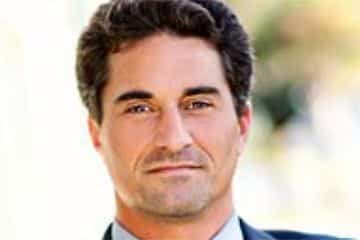
Site Map | Terms of Use | Privacy Notice © Copyright 2024 Widerman Malek
Trending News

Related Practices & Jurisdictions
- Intellectual Property
- Litigation / Trial Practice
- All Federal

Increased employee mobility, health challenges, and the economic downturn due to the COVID-19 pandemic may result in more inventors than usual being unavailable to sign declarations for patent applications as required by the U.S. Patent and Trademark Office (USPTO) for all applications. In other cases, inventors may have a falling out with employers or refuse to cooperate in signing declarations. If patent applicants cannot acquire declarations from these unavailable or uncooperative inventors, significant difficulties may arise in patent prosecution, such as delayed issuance or application abandonment. Fortunately, the USPTO provides for applicant control of patent prosecution by filing a substitute statement in the event a declaration cannot be obtained. This article summarizes the requirements of substitute statements and identifies pitfalls to avoid in preparing and filing substitute statements.
Substitute Statements
Applicants have the option of filing a substitute statement for unavailable inventors listed in applications filed on or after September 16, 2012. A substitute statement may be submitted where an inventor is deceased, is legally incapacitated, cannot be found or reached after diligent effort, or refuses to execute a declaration. 35 U.S.C. § 115(d) .
In cases where an inventor refuses to execute or cannot be found after diligent effort, the substitute statement may only be filed if the applicant is an assignee, an inventor on the same application, a party to whom the inventor is under an obligation to assign, or a party who otherwise has sufficient proprietary interest. MPEP § 409.02 , MPEP § 409.05 .
In cases where the inventor is deceased or legally incapacitated, the substitute statement may only be filed if the applicant is an assignee, a legal representative, a party to whom the inventor is under an obligation to assign, or a party who has sufficient proprietary interest. If a legal representative of the inventor exists, then the applicant is not required to involve the legal representative. MPEP § 409.01(a) .
A substitute statement must be filed before paying the issue fee or as otherwise outlined in the Notice of Allowability. For national stage applications, the applicant must file the substitute statement no later than the filing of a Request for Continued Examination (RCE).
Substitute Statement Requirements
In addition to complying with the requirements of 35 U.S.C. § 115(b) , the executor of the substitute statement must: 1) identify the person executing the substitute statement and the relationship to the non-signing inventor; 2) identify the basis for which a substitute statement is required; 3) acknowledge the penalties clause under 37 C.F.R. 1.64(e) ; 4) identify the inventor to whom the statement applies; 5) review and understand the contents of the application (including the claims); and 6) be aware of the duty to disclose to the USPTO all information known to the person to be material to patentability as defined in 37 C.F.R. 1.56 .
Additionally, the legal name of each inventor is required in the substitute statement if not already provided in an Application Data Sheet (ADS). The last known mailing address and the residence of both the executor of the substitute statement and the non-signing inventor (unless deceased or legally incapacitated) are required if not already provided in the ADS.
If a substitute statement is required on the basis that the inventor cannot be reached with diligent efforts, the USPTO may require that evidence be provided showing why the inventor is unavailable and the efforts made to contact the inventor. Remember to document all attempts to have the inventor sign the declaration in the event that the USPTO requests evidence submission after the filing of a substitute statement. Examples of such documentation are sent emails, U.S. mail return receipts, mail tracking number receipts, and mail tracking provided online by the mail service used to mail declaration information to an inventor.
Substitute Statement Alternatives
A signed assignment may serve as a declaration if the assignment includes the information and statements required in 37 C.F.R. 1.63(a) and if a copy of the assignment is recorded in the USPTO’s assignment database. A copy of an inventor’s declaration from a prior application in a benefit chain may also serve as a declaration for the unavailable inventor if the declaration meets all required declaration requirements. A prior declaration may be insufficient if, for example, the prior declaration is for an application subject to pre-AIA rules and the instant application is subject to post-AIA rules, which have different declaration language requirements than pre-AIA rules.
Final Considerations
Patent applicants can gain control over patent prosecution and assert patent rights by filing a substitute statement. Before filing a substitute statement, applicants should coordinate with patent counsel regarding their particular circumstances and should consult current USPTO rules.
Current Legal Analysis
More from mintz, upcoming legal education events.

Sign Up for e-NewsBulletins
You are using an outdated browser. Please upgrade your browser to improve your experience.
Find the right content for you

US Inventor Declarations and Assignments
After a patent application has been filed, the inventor may be required to sign and submit various forms. What happens if this is several years into the patent process, and the inventor can no longer be reached to sign these forms? And what can you do now to prevent any complications from arising?
One country which requires the inventor to submit signed forms is the USA. Each inventor named on the application must submit a signed declaration and assignment with the US Patent and Trademark Office before payment of the Issue Fee.
What are US Declarations and Assignments?
An inventor declaration confirms the inventor’s belief that they are the original (or joint original) inventor of the claimed invention. If an inventor declaration is not submitted by each inventor before payment of the Issue Fee, the application will be abandoned.
An assignment provides documentary evidence that the rights in the invention have been transferred from the inventor to the applicant, and that the applicant is the rightful owner of any patent granted for the claimed invention. If a signed assignment is not submitted by each inventor before payment of the Issue Fee, the application could grant in the name of the inventor(s) instead of the applicant, although this can usually be rectified post-grant.
What if the inventor cannot or will not sign these forms?
In cases where the US application is filed later in the patent process, such as at the 12 month convention deadline, or even the 30 month national phase deadline, it is possible that the inventor(s) may no longer be available to sign the required forms (for example, they have left the company). What happens then?
A substitute statement can be submitted in lieu of a declaration if an inventor is deceased, is under legal incapacity, has refused to sign the declaration, or cannot be found or reached after a diligent effort. To demonstrate a “ diligent effort ”, it is usually sufficient to send a copy of the forms to the inventor’s last known address, along with an explanation of what is required and specifying a reasonable time-period for returning the signed forms (for example, 28 days). If the forms are not returned by the end of this period, then it can be assumed that the inventor is no longer reachable.
If an inventor cannot or will not sign the required assignment to transfer their rights in the invention to the applicant, then one possible option where the inventor is an employee of the applicant is to submit their employment agreement in lieu of the assignment. However, for the purposes of the USA, the employment agreement must address the employee’s obligation to assign any Intellectual Property (IP) rights created during their employment to their employer. Ideally the document should contain language which indicates a present and active intent to assign any IP rights (for example, “ I hereby assign… ”), rather than language which merely indicates an intent to assign any IP rights in the future (for example, “ I agree to assign… ”).
If the employment agreement does not contain suitable language, one option is to rely on any local IP laws which legally require the employee to assign any IP rights to their employer. For example, in the UK, section 39 of the Patents Act 1977 states that an invention made by an employee will automatically belong to the employer if:
“ (a) it was made in the course of the normal duties of the employee or in the course of duties falling outside his normal duties, but specifically assigned to him, and the circumstances in either case were such that an invention might reasonably be expected to result from the carrying out of his duties; or
(b) the invention was made in the course of the duties of the employee and, at the time of making the invention, because of the nature of his duties and the particular responsibilities arising from the nature of his duties he had a special obligation to further the interests of the employer’s undertaking. ”
Therefore, if the employee and the employer are based in the UK and the invention falls into category (a) or (b) above, then the invention will automatically belong to the employer under UK law.
As such, in addition to filing a copy of the employment contract, a copy of the relevant local laws and a memorandum explaining why, under local law, the invention belongs to the employer can also be filed to prove full ownership of the application by the applicant.
What can the applicant do to avoid the above complications?
1/ Make use of PCT declarations if filing an International application, particularly:
- (i) the declaration as to the identity of the inventor;
- (ii) the declaration as to the applicant’s entitlement, as at the international filing date, to apply for and be granted a patent; and,
- (iv) the declaration of inventorship (for the purposes of the designation of the USA).
For example, declaration (ii) satisfies the proof of right requirements in the Indian national phase, and (iv) satisfies the declaration requirements in the US national phase. Declarations (i) and (ii) can be signed off by the acting attorney; declaration (iv) however must be signed by each inventor.
2/ Make sure any employment agreements, particularly for research & development staff, clearly address the employee’s obligation to assign any IP rights created, and include language which actively and presently assigns those rights to the employer.
If existing employment agreements do not contain such clauses, a separate agreement can be drawn up for the employee to sign and then appended to their contract.
3/ Include a clause in the employment agreement requiring the employee to sign any necessary forms both during and after their employment. This contractual agreement can be referred to should the employee actively refuse to sign any required forms later in the patent process.
Taking the above actions now can help to avoid any problems later in the patenting process which will likely incur unnecessary costs to rectify. Should you require any assistance or advice, please contact me at christina .schiavone@ wynne-jones .com .
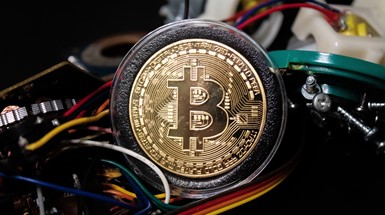
NFTs - the new way to exploit your IP
Non-fungible tokens are the latest fashion in the cyber world. Building on blockchain technology, NFTs may be a new way to exploit intellectual property rights.
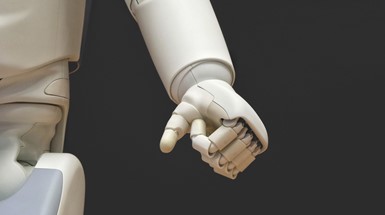
Artificial Intelligence Patents at the EPO and UKIPO
The number of patent applications for inventions relating to Artificial Intelligence “AI” is growing fast! But, can artificial intelligence be patented at the European Patent Office? The answer is both yes... and no.
Related News

EPO Fee Increases 1 April 2024
The European Patent Office (EPO) has again announced a set of fee increases [1] on procedural fees, to be effective from 1 April 2024 .

The Future is Coming, Faster Than Ever
Throughout history, we have witnessed periods of significant technological advancements that have revolutionised society. We are now in the age of information, biotechnology, and the renewable energy revolution. We are witnessing, and will continue to witness, massive leaps forward in technology bringing with them significant social and cultural changes. This is all happening at a speed never seen before.

Support for Cheltenham Open Door During 2023
Throughout 2023, Wynne-Jones IP supported local charity,Cheltenham Open Door. Over the course of the year our active Chairty & Social Team organised fundraising events and donation rallies to enable the small, independent charity to provide much needed support in the community.

Wynne-Jones IP Partners with CyNam to Foster Cyber Technology Innovation in Gloucestershire
We are delighted to announce a strategic partnership with CyNam to support and sponsor their mission to nurture cyber technology innovation in Gloucestershire.

We asked ChatGPT about intellectual property. Here's what we found...
ChatGPT is, undoubtedly, a remarkable tool that is revolutionising the way people work. But, like a lot of technology it has its pitfalls - we’ve all seen the headlines about bias, misinformation and students using it to generate work. We asked it what the top five questions people were asking about intellectual property in the UK, to provide the answers and then asked our expert IP attorneys what they thought.
Semiconductors are the future and the UK has huge opportunity
The UK Government has recently announced a 10-year strategy and £1billion investment plan in the semiconductor industry. Reaction has been mixed: some have said that it’s a “starting gun on a bright future” while others say that it’s simply not enough. We talked to semiconductor experts Dr Ian Lambert and Dr Elliott Davies of Wynne-Jones IP to find out what semiconductors are and to get their thoughts on the announcement.
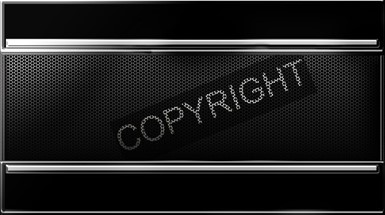
The Horror, and The Magic of Copyright
Arguably, one of the most horrifying times for an IP owner is when protection dies (or expires)...
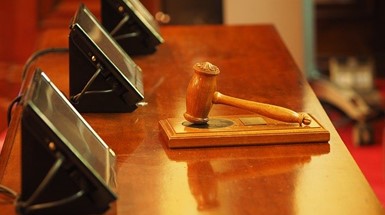
The scope of protection of a patent is fundamental to whether a patent is infringed.
In 2017 the U.K. Supreme Court issued its landmark ruling in Actavis v Eli Lilly [2017] , that fundamentally changed how U.K. patent infringement is assessed, by the (re-) introduction of a ‘doctrine of equivalents’, in which a feature that falls outside of a ‘normal’ interpretation of the claims but that nonetheless varies from the invention in a way that is ‘immaterial’, infringes a U.K. patent. This can provide a U.K. patent with a broader scope of protection than was the case prior to the Actavis decision.
Here we look at how the Actavis decision has been applied and developed in subsequent decisions by the U.K. courts.
We use cookies on this site to enhance your user experience
By clicking any link on this page you are giving your consent for us to set cookies.

An official website of the United States government Here’s how you know keyboard_arrow_down
An official website of the United States government
The .gov means it’s official. Federal government websites often end in .gov or .mil. Before sharing sensitive information, make sure you’re on a federal government site.
The site is secure. The https:// ensures that you are connecting to the official website and that any information you provide is encrypted and transmitted securely.
Jump to main content

Fashion, Beauty, and Intellectual Property: Fashion History
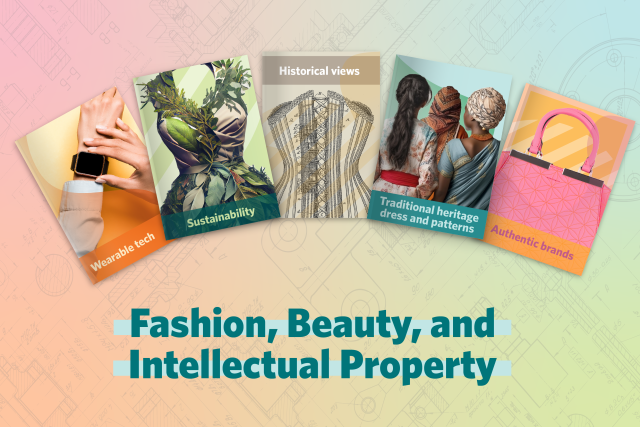
Welcome back to the virtual runway for the next installment of the Fashion, Beauty, and Intellectual Property (IP) series!
From silk-woven hats to sportswear, dry-scouring methods to detachable umbrella covers, the rich history of patents can help us uncover how fashion has challenged expectations and contributed to societal progress for generations. Throughout U.S. history, inventors in the fashion and beauty industry have improved workplaces, helped consumers feel more confident, and even used their intellectual property to fight for a more equitable world.
Join us on April 25 from 4-5 p.m. ET , for a virtual fireside chat with Rebekah Oakes, USPTO's historian to learn about the history of IP in the fashion industry.
Register today
The Fashion, Beauty, and IP series is a collection of webinars and hybrid events that cover fashion, beauty, and accessories in relation to IP protection. So, turn the pages or swipe left and right with us as we uncover and highlight the ins and outs of wearing authentic brands, reflecting on the history of fashion, sustainability, protecting traditional heritage dress and patterns, wearable technology, and more.
This event and the larger series are hosted by the USPTO's Eastern Regional Outreach Office (EROO). To learn more about the event and series, contact EROO at 571-270-7100 or email us at [email protected] .
Accessibility accommodation
If you are an individual with a disability and would like to request a reasonable accommodation, please submit your request to the contact information listed above.
Additional information about this page

IMAGES
VIDEO
COMMENTS
Chapter 0400. Section 409. 409 Death, Legal Incapacity, or Unavailability of Inventor [R-11.2013] For information regarding applications for patent filed on or after September 16, 2012 on behalf of a deceased or legally incapacitated inventor, see MPEP § 409.01 (a). For information regarding applications for patent filed on or after September ...
In addition, a person to whom a deceased inventor was under an obligation to assign the invention - such as an employer - may also make application for a patent. 35 U.S.C. § 118. To satisfy the oath or declaration requirement, a Substitute Statement (USPTO form AIA/02) must be executed by someone authorized to do so. 37 C.F.R. 1.64 (a).
37 CFR 1.64 implements the substitute statement provisions of 35 U.S.C. 115(d) and applies to applications filed on or after September 16, 2012.. 37 CFR 1.64(a) provides that an applicant under 37 CFR 1.43, 1.45 or 1.46 may execute a substitute statement in lieu of an oath or declaration under 37 CFR 1.63 if the inventor is deceased, is under a legal incapacity, has refused to execute the oath ...
302.10-Electronic Submission of Assignment Documents; 303-Assignment Documents Not Endorsed on Pending Applications; 304‑305-[Reserved] 306-Assignment of Division, Continuation, Substitute, and Continuation-in-Part in Relation to Parent Application. 306.01-Assignment of an Application Claiming the Benefits of a Provisional Application
an assignment informing the USPTO (United States Patent and Trademark Office) about the trust's ownership of the patent; ... When a deceased inventor does not leave a will, it creates a challenging situation for managing their patents or patented inventions. In this last option, the absence of a will complicates matters.
If so, the assignment must be recorded with the USPTO. Under Rule 1.64, in lieu of an oath or declaration, a substitute statement may be executed by the assignee (as the applicant) if the inventor is deceased, is under a legal incapacity, has refused to execute an oath or declaration, or cannot be located after diligent effort.
A patent or patent application is assignable by an instrument in writing, and the assignment of the patent, or patent application, transfers to the assignee (s) an alienable (transferable) ownership interest in the patent or application. 35 U.S.C. 261 . II. ASSIGNMENT. "Assignment," in general, is the act of transferring to another the ...
Under 37 CFR 1.46, a person to whom the inventor assigned ("assignee"), to whom the inventor was under an obligation to assign ("obligated assignee"), or a person who otherwise shows sufficient proprietary interest in the matter may make an application for patent on behalf of the deceased or legally incapacitated inventor.See 35 U.S.C. 118.If the 37 CFR 1.46 applicant is the assignee or ...
An assignment letting the USPTO know that the trust now owns the patent. A document which makes note of the USPTO assignment in the file wrapper of the patent or patent application. A power of attorney stating that the patent attorney now represents the trust in matters relating to the deceased inventor's patents and applications.
The USPTO emphasizes that both the statute and the implementing rules still require an executed oath/declaration by each inventor unless one of the traditional exceptions apply (e.g., unless an inventor is deceased, legally incapacitated, refuses to execute an oath/declaration, or cannot be found or reached after diligent effort, in which case ...
Introduction. Once the patent professional has determined that inventorship needs to be corrected in a U.S. utility patent, the patent professional will follow the U.S Patent and Trademark Office ("USPTO") procedures to correct inventorship. 37 CFR 1.48 enables an assignee. Inventorship Correction by Requesting a Certificate of Correction.
37 CFR 3.11 Documents which will be recorded. (a) Assignments of applications, patents, and registrations, and other documents relating to interests in patent applications and patents, accompanied by completed cover sheets as specified in § 3.28 and § 3.31 , will be recorded in the Office. Other documents, accompanied by completed cover ...
IV. Assignments containing the Inventor's Oath or Declaration : An assignment that contains the information and statements in an oath or declaration ("assignment-statement") may be used as the inventor's oath or declaration. The assignment must be recorded, and the best way to effect recordation is through use of the
M.P.E.P. Section 409.01(b): Deceased or Legally Incapacitated Inventor- Application Filed Before September 16, 2012. Taken from the 9th Edition of the MPEP, Revision 07.2022, (Last Revised February 2023). Updated in BitLaw in October 2023
Substitute statements are available if an inventor cannot execute an oath/declaration due to reasons such as death, legal incapacity, inability to find the inventor, or refusal of the inventor to sign if under an obligation to do so. ... Applicants using a combined assignment/declaration must include an assignment cover sheet under 37 C.F.R ...
In addition, a copy of the assignment must be recorded in the USPTO's assignment database. An Oath or Declaration is not required at the same time that the application is filed. Instead, an applicant may submit an application data sheet that identifies each inventor by his or her legal name and provides a mailing address and residence for ...
Obtaining Patent Rights For A Deceased Inventor. Mark Malek. Jul 22nd, 2013. Patent. By: Mark Malek. In my last article, I set forth the details for the process of obtaining a patent when one of the inventors is being uncooperative. As indicated in that article, each inventor needs to sign an oath or declaration when filing a patent application.
A signed assignment may serve as a declaration if the assignment includes the information and statements required in 37 C.F.R. 1.63(a) and if a copy of the assignment is recorded in the USPTO's assignment database. A copy of an inventor's declaration from a prior application in a benefit chain may also serve as a declaration for the ...
Relationship to the inventor to whom this substitute statement applies: Legal Representative (for deceased or legally incapacitated inventor only), Assignee, Person to whom the inventor is under an obligation to assign, Person who otherwise shows a sufficient proprietary interest in the matter (petition under 37 CFR 1.46 is required), or
A signed assignment may serve as a declaration if the assignment includes the information and statements required in 37 C.F.R. 1.63(a) and if a copy of the assignment is recorded in the USPTO's ...
Declarations (i) and (ii) can be signed off by the acting attorney; declaration (iv) however must be signed by each inventor. 2/ Make sure any employment agreements, particularly for research & development staff, clearly address the employee's obligation to assign any IP rights created, and include language which actively and presently ...
Deceased Inventor. By faq. 2020-06-21. No Comments. A named inventor who has died prior to the filing of apatent application or during the prosecution of a patent application. — see 37 CFR 1.42 and MPEP 409. ← Dead → Declaration.
On February 12, 2024, the U.S. Patent and Trademark Office issued new inventorship guidance for inventions assisted by artificial intelligence (AI). The guidance explains that AI-assisted inventions are not "categorically unpatentable for improper inventorship," and that patent protection may be duly sought for inventions "for which a natural person provided a significant contribution."
In light of robust, extensive feedback from a wide array of stakeholders and the Patent Trial and Appeal Board's (PTAB) experience in implementing the America Invents Act (AIA) for over a decade, today the U.S. Patent and Trademark Office (USPTO) announced a Notice of Proposed Rulemaking (NPRM) seeking public input on proposals to codify many existing PTAB review policies and practices.
The United States Patent and Trademark Office (USPTO) hosted the final round of the National Patent Application Drafting Competition (NPADC) on April 12 at USPTO headquarters in Alexandria, Virginia. Congratulations to the winners: First place - University of Missouri - Kansas City School of Law. Second place - UC Berkeley School of Law
Blog by Kathi Vidal, Under Secretary of Commerce for Intellectual Property and Director of the USPTO. Bolstered by the Executive Order on the Safe, Secure, and Trustworthy Development and Use of Artificial Intelligence (AI), the Department of Commerce is taking the lead on providing a key framework that guides our nation's approach to AI and ...
Office of Enrollment and Discipline Information System (OEDIS) Maintenance. The USPTO will perform routine maintenance on OEDIS on the following nights: The first night of maintenance will be from midnight-5:30 a.m. ET on Tuesday, April 23. The final night of maintenance will be from midnight- 5:30 a.m. ET on Wednesday, April 24 ET.
Join us virtually April 25, from 4-5 p.m. ET for a virtual fireside chat with Rebekah Oakes, the United States Patent and Trademark Office (USPTO) historian, to learn about the history of intellectual property in the fashion industry. To learn more about the event and series, contact the USPTO's Eastern Regional Outreach Office at 571-270-7100 ...
Add to Calendar2024-05-09 14:00:002024-05-09 14:00:00Exploring your options: USPTO resources and Small Business Innovation Research or Small Business Technology Transfer programs If you're a small business owner exploring your options for research and development, including commercialization, join us virtually on May 9, from 2-3:15 p.m. ET, for an overview of the U.S. Small Business ...
Add to Calendar2024-04-25 16:00:002024-04-25 16:00:00Fashion, Beauty, and Intellectual Property: Fashion History Welcome back to the virtual runway for the next installment of the Fashion, Beauty, and Intellectual Property (IP) series!From silk-woven hats to sportswear, dry-scouring methods to detachable umbrella covers, the rich history of patents can help us uncover how fashion has ...